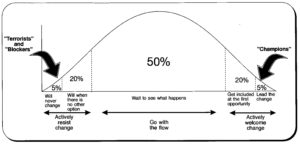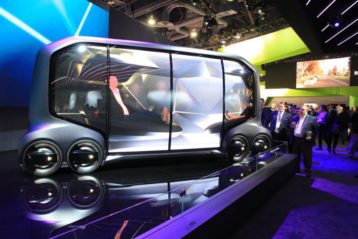
The Fourth Industrial Revolution (Part 3) Industry 4.0, Digital Transformation
In this third entry in the series; we cover the attributes of the Fourth Industrial Revolution, why it’s important, and the implications for business.
In Klaus Schwab’s book “The Fourth Industrial Revolution” Schwab coins the title phrase in his book. Others use terms such as “Industry 4.0” (BMBF-Internetredaktion, n.d.) and the “Digital Transformation” (“Digital Transformation Initiative,” n.d.). All three terms in general, refer to the application of an accelerating set of technologies, and the resulting impact on society, business, and industry.
Great, so what?
Well, first let’s identify the technology megatrends Schwab describes as part of the Fourth Industrial Revolution (4IR). “All new developments,” Schwab asserts, “have a single key feature in common; the pervasive power of digitization and information technology.” (Schwab, 2016). Schwab organizes the trends into three broad categories, physical, digital, and biological.
Physical
The physical technologies that Schwab refers to in 4IR are autonomous vehicles, 3D printing, advanced robotics, and new materials.
Autonomous Vehicles
I attended CES 2018 this past January, and if there was a theme of the show; autonomous vehicles, 3D printing, advanced robotics, and emerging AI would have been the subtitle.
Conceptually the autonomous vehicle contains technology facilitating operation of a variety of vehicles with minimal or no human intervention. The driverless car has been in the technology vernacular since at least 1926 (“Phantom Auto Will Tour City,” 1926), however, the vehicles at CES were far removed from the radio controlled experiments in the first half of the 20th century.
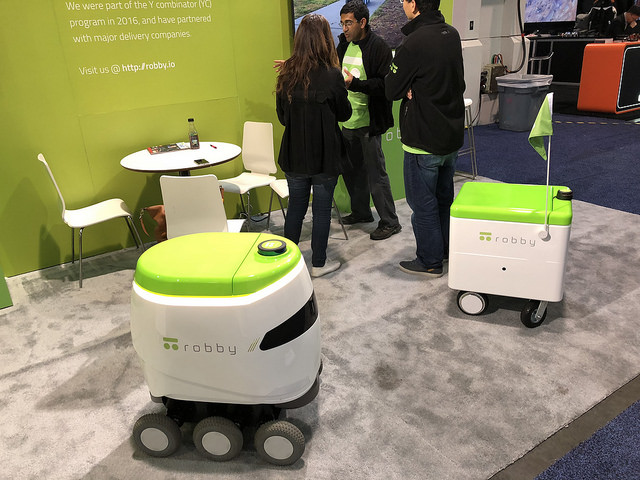
Robby – Local Individual Delivery
The SAE defines six levels of automated driving, ranging from level 0 – manual, in what we know today as a contemporary car, to level 5 – fully automated with a human passenger acting in the sole capacity of management (“SAE international standard J3016.,” 2014).
While we will get to artificial intelligence in another post; AI is particularly relevant to autonomous vehicles. In 2016 an experimental vehicle was tested on the roads of Monmouth County, New Jersey. Unlike the experimental vehicles designed by any number of other research groups from GM to Tesla, this vehicle, developed by Nvidia (yes, the same Nvidia that manufactures graphics cards for the PC and set-top consoles where your children are playing Far Cry), wasn’t operating from one instruction provided by programmer or engineer. This car taught itself to drive through a combination of human driver observation, and self-adapting machine learning algorithms. The fundamental challenge is that the engineers that design these systems aren’t completely clear how the car makes its decisions. Joel Dudley, PhD, Executive Vice President of Precision Health at Mount Sinai, and Chief Scientist of the hospital’s AI intiative called “Deep Patient,” states “We can build these models, but we don’t know how they work” (Knight, 2017).
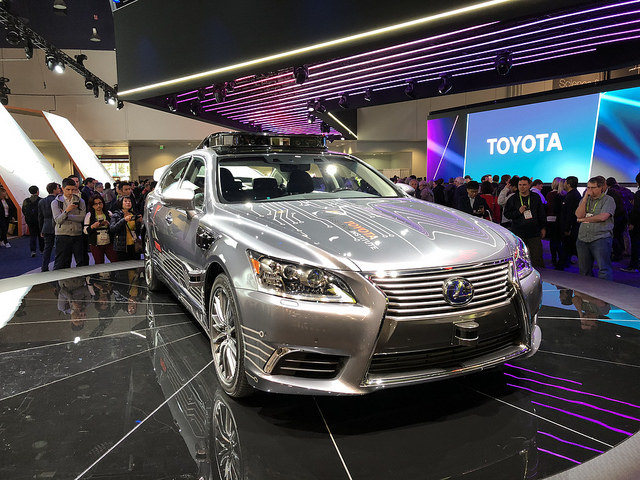
Toyota Lexus Autonomous LS350
The implications for business are fairly clear, we’re not talking about just automobiles, similar algorithms are being considered by Airbus and Boeing for use in flight control systems. And levels of autonomy exist in everything from military and commercial drones, trucks and boats. In fact, these technologies will have profound effects on logistics and supply chains (Schwab, 2016). Additionally, being cybernetic systems, they are targets of attack and vulnerable.
Key Message and Takeaway:
Everything from consumer automotive, public transportation, supply chain, logistics, consumer deliveries will be affected by autonomous vehicles; and much sooner than you think, 5-7 years not decades. Is your supply chain ready for the changes? Autonomous Uber anyone?
3D Printing
I remember when I saw the first prototyping stereolithography system when I worked for Mark IV Luminator in the mid-1990s. It used ultraviolet light to cure layer by layer of a model out of a vat of resin (looking very much like a vat of goo from a 1960’s sci-fi movie). The build volume of the printer was 250 cubic mm, each part produced came at a cost of $100 to $500. The machine itself was about the size of 2 4-drawer filing cabinets and came at a cost of about $200,000 dollars (“Wohlers Associates,” n.d.).
Earlier this summer, I went to MicroCenter and purchased a wireless 200 cubic mm FDM (full deposition modeling) printer for just under $400. This printer uses a standard 1.75mm reel filament that comes in a number of materials, everything from PLA and ABS plastics, to carbon fiber and wood. 1Kg reel of filament runs anywhere from $30 – $50.
Again, so what?
Additive manufacturing allows for the production of not just fragile prototype parts, the kind I first saw in the 1990s. Today’s additive manufacturing lends itself to the manufacturing of replacement part, prototypes, and objects produced from unique

Ever lost or broke those stupid clips on your shelving? Print new ones, and yes, this is an actual clip from a cabinet.
materials that would have been cost prohibitive only a few years ago.
For me, I decided to purchase a 3D printer for a couple of purposes; first I am a bass guitar builder, and I use the printer to produce prototype control knobs for my guitar builds, and now there are very replacement few parts I need around the house that can’t be replaced with 3D printed part (see below).
Now DMLS (direct metal laser sintering) printers that can produce production quality metal alloy parts that can be used in everything from biomedical to aerospace (Stratsys, 2018).
Key Message and Takeaway:
3D printing is not only here, but it is also becoming affordable for consumers (though still primarily in the maker community) and in broad scale manufacturing. No longer will repair depots need to carry an inventory of replacement parts; need a replacement knob for a broken one on the
- Guitar control knob prototypes from my 3D printer
- Guitar control knob prototypes from my 3D printer
kitchen range, the local hardware store was out of 90-degree elbows, need a replacement narrow tip for your vacuum (Thingiverse, 2018)? Download the part and print it on the 3D printer next to the multifunction printer in the office. Seriously, these are all parts available right now and can be printed.
We will continue to unpack each of the technologies and give you a few things to look out for as these technologies mature and become mainstream. In the next post, we will continue with the physical impact of 4IR with a discussion on advanced robotics and new materials.
References:
BMBF-Internetredaktion. (n.d.). Industrie 4.0 – BMBF. Retrieved December 11, 2018, from https://www.bmbf.de/de/zukunftsprojekt-industrie-4-0-848.html
Digital Transformation Initiative. (n.d.). Retrieved December 11, 2018, from http://wef.ch/2hU0x7I
Knight, W. (2017). The Dark Secret of at the heart of AI. Retrieved December 12, 2018, from https://www.technologyreview.com/s/604087/the-dark-secret-at-the-heart-of-ai/
Phantom Auto Will Tour City. (1926, December 8). Millwaukee Sentinel. Retrieved from https://news.google.com/newspapers?id=unBQAAAAIBAJ&sjid=QQ8EAAAAIBAJ&pg=7304%2C3766749
SAE international standard J3016. (2014, January). SAE.
Schwab, K. (2016). The Fourth Industrial Revolution. World Economic Forum.
Stratsys. (2018). DMLS 3D Print Usage. Retrieved December 12, 2018, from https://www.stratasysdirect.com/technologies/direct-metal-laser-sintering
Thingiverse. (2018). Household Replacements. Retrieved December 12, 2018, from https://www.thingiverse.com/explore/newest/household/replacement-parts/page:3
Wohlers Associates. (n.d.). Retrieved December 12, 2018, from https://wohlersassociates.com/mr.html
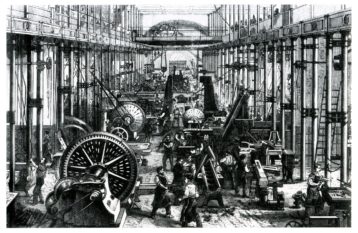
The Fourth Industrial Revolution – Where Are You Going With This?
So, it’s important that we frame and give context to the term “fourth industrial revolution” or what some call Industry 4.0.
Without going in to too much history, and there is some debate over the time periods, the change from an agrarian/rural society to where we are today is marked by several periods of technological change. These, let’s call them epochs, result in great economic paradigm shifts where technologies converge and fundamentally change how we move economic activity across the value chain (Holodny, 2017).
The first industrial revolution occurred in the first half of the 19th century (basically up to about 1840); the 1IR is marked as the age of the steam engine, it we see the first use of new materials such as iron and steel; we see fuel sources such as coal, electricity, petroleum and the first internal combustion engine (“Industrial Revolution | Definition, Facts, & Summary,” 2018).
The second industrial revolution occurred in the last half of the 19th century and first part of the 20th century (basically up to 1914 or the start of World War I); the 2IR is marked as the age of synergy (Vaclav, 2005); the emergence of the railroad titans and the telegraph. It marked the expansion of urban society with the beginnings of municipal water; and sewage systems.
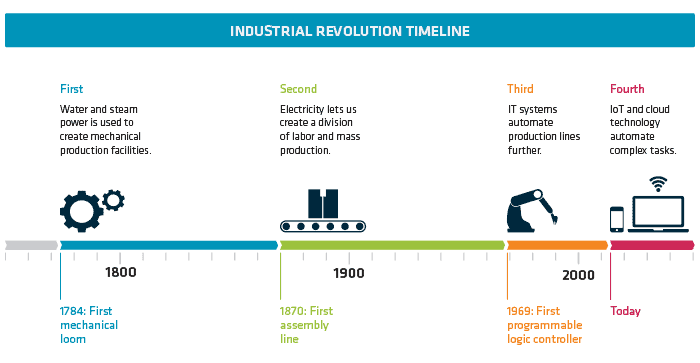
Source: https://mjolner.dk/2015/01/14/realizing-the-fourth-industrial-revolution/
Here’s where things get a little blurred; the third industrial revolution, coined by economist and lecturer Jeremy Rifkin in his book “The Third Industrial Revolution: How Lateral Power is Transforming Energy, the Economy, and the World,” started, arguably, in post-World War II from 1950 on. 3IR is marked by the rise of communication, computer, and digital technologies. And the birth of the Internet.
Ok so now… the fourth industrial revolution, a term invented by Klaus Schwab, chairman of the World Economic Forum, will be known for the blurring of physical, digital, and biological systems in to cyber-physical systems (Schwab, 2017). 4IR will be marked by the emergence of breakthrough technologies in the fields of robotics, artificial intelligence, nanotechnology, quantum computing, biotechnology, the Internet of Things (IoT), the Industrial Internet of Things (IIoT), fifth-generation wireless technologies (5G), blockchain and cashless technologies, additive manufacturing/3D printing and fully autonomous vehicles.
Over the next several articles we will look at each of Schwab’s assertions, and what they mean for business and the global economy. Then we will determine how to, if we pay attention, roadmap around the potholes of these technologies and leverage them to drive top line growth and opportunity in the SMB and NPO/NGO sectors.
Some readers will question the commercial/business importance of the technologies mentioned and dismiss them as novelty. I would offer a cautionary word as history is filled with examples of people doubting the technologies of the time, from “The horse is here to stay but the automobile is only a novelty—a fad.” – Henry Ford’s banker, 1903 to “There is no reason for any individual to have a computer in his home.” – Ken Olson founder of Digital Equipment Corporation, 1977.
We’ll see.
References:
Holodny, E. (2017). A key player in China and the EU’s “third industrial revolution” describes the economy of tomorrow. from https://www.businessinsider.com/jeremy-rifkin-interview-2017-6
Industrial Revolution | Definition, Facts, & Summary. (2018). https://www.britannica.com/event/Industrial-Revolution
The Fourth Industrial Revolution, by Klaus Schwab. (2017). https://www.weforum.org/about/the-fourth-industrial-revolution-by-klaus-schwab/
Vaclav, S. (2005). Creating the Twentieth Century: Technical Innovations of 1867–1914 and Their Lasting Impact. Oxford, New York: Oxford University Press.
image source: Industrial Revolution Timeline (2015) https://mjolner.dk/2015/01/14/realizing-the-fourth-industrial-revolution/
Kent’s Dilemma
It’s interesting that I’m still asked what exactly is it that I do for a living. I covered a bit of my experience in a post in 2015; Why the CEO couldn’t care less about IT.
So over the last few weeks; I’ve started creating new content; and bring to you my dear readers a flavor of Ross’ experience.
So here’s a quick video explanation of basically what I do; in this case for a friend who’s recently started a new business.
I’m ramping up my posts and I hope you enjoy the information.
Best,
Ross
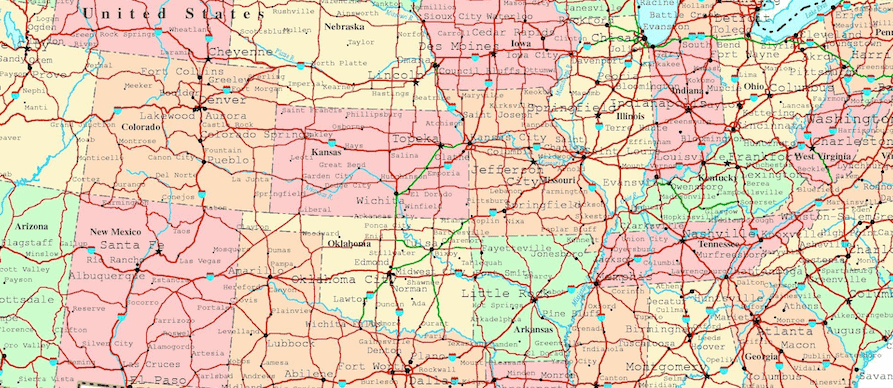
Small Business, the Fourth Industrial Revolution, and a Map
We see in the headlines business and our global economy is faced with a digital transformation; we are at the beginning of the fourth industrial revolution.
“The speed of current breakthroughs has no historical precedent. When compared with previous industrial revolutions, the Fourth is evolving at an exponential rather than a linear pace…” – Klaus Schwab, Founder and Executive Chairman, World Economic Forum
The most difficult challenges for business not prepared for this transformation center on outdated modes of operating processes, and an unprepared workforce.
Those businesses; small or large; who have the foresight to look down the road ahead will be able to harness competitive advantages the transformation brings.
Ask anyone “what is digital transformation” and you will get different answers; the reality is that very few people agree on what the term “digital transformation” means.
Where we can agree is that the rapid pace of technology advancement is impacting business in ways few would have predicted; we need only look at the effects that digital commerce has on consumer transactions to appreciate the disruption.
“…Moreover, it is disrupting almost every industry in every country. And the breadth and depth of these changes herald the transformation of entire systems of production, management, and governance.” – Klaus Schwab, Founder and Executive Chairman, World Economic Forum
Small business and non-profits are the most exposed to these disruptions; small business owners and small NPO MD are focused almost solely on the day to day necessities of running their businesses and reaching their constituents. Many times, they have neither the bandwidth nor expertise to really understand the impact; and honestly, we wouldn’t expect these managers to understand the effects.
Unprepared, that’s the word that comes to mind for many small businesses. Given 47.5% or 58.9 million people in the workforce are employed by the 30.2 million small businesses in the United states; being unprepared should be concerning to those small business owners.
Guidance and digital age Sherpas are needed to assist along the rocky trails and ensure that the backbone of the American economy continues to remain competitive on the global landscape.
Yet those small businesses are the very enterprises that need guidance the most, at the same time can afford it the least.
Over the next several articles, we will explore specifically, how we facilitate the digital transformation of small business and NPOs, and the commensurate economic impact on these businesses in real dollars. Leveling the playing field allowing small business to outpace their peers that are reticent to embrace the coming changes.
And everything begins with a vision… and a map.
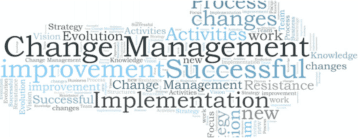
On Technology Leadership and Change Challenges
I was interviewed for a local blog article on Information Technology and the leadership challenges of integrating with business, managing change, and risk. I believe it’s worthwhile to share some of those thoughts here.
Q: How do go about applying technology to solve business challenges?
A: When I think about solving challenges in the business, it’s never simply one thing, e.g. technology, that solves the problem. The solution always comes about through a combination of people, process, and tools. Technology is simply a tool. A tool can be purchased and implemented in an afternoon. Think about going to the hardware store and purchasing a hammer and nails; in the hands of a person who’s never used a hammer before all you will get is a swollen thumb and a piece of wood with a bunch of bent nails. However, in the hands of a skilled craftsman, you will get the cathedral Notre-Dame de Paris. So the craftsman (people) have the motivation, and ability, to choose the correct hammer (the tool) and select the right nails and material and know how to use the hammer and material (the process).
If we think about change adoption it looks like a bell curve; with 25% of people championing change; and 25% actively resisting change; then there’s the 50% on the fence. Yet as managers; where do we spend most of our time? On the bottom 25%; attempting to “convince” them to come along. Taking such an approach alienates the champions “we’re working so hard and not getting kudos and they are stalling progress”; and shifts the middle 50% to becoming blockers resisting change, “If they are having to drag that many people along, this change can’t possibly be a good thing”.
We should be spending our change efforts to working and fostering the ‘super man/woman” in the top 25% and top half of the middle 50%, the blockers will either come along because of peer pressure or simply leave the business.
Q: How do you go about convincing business leadership to make major technology investments?
A: There have been very few times in my career where I’ve had to “convince” senior leadership of anything. If IT has a seat at the executive table; and access to the board of directors; and IT is actively engaged in the strategic planning process of the business; the required objectives and commensurate people, process, and tools becomes self-evident through the organic planning process.
In those cases where something arises that requires a major investment, and it’s out of the planning cycle, e.g. an acquisition or some other event; again, the need and commensurate people, process and tools are self-evident.
If I am in a position of having to “convince” or “sell” anything to senior leadership, one of two things is not occurring and need drastic change; either IT is not included in the overall planning process of the business and sitting at the table; or I am not listening to the strategic needs of the business and aligning technology services accordingly.
Q: What are some of the most important skills when evaluating and making staffing decisions?
A: While some people believe that a person having an exceptional technical acumen is the most important attribute. Flexibility and adaptability are far more important overall; many technical skills can be taught; if you are an engineer who understands object oriented design, learning the differences between C# and Java are a matter of semantics. However if you don’t possess the ability to be flexible enough to adapt to changes from a structured design model, to an object oriented model then no amount of skill development can compensate for the deficiency.
When it comes down to people, I look at three things; do they have the desire or drive to accomplish something, do they have an amount of ability to accomplish something in a reasonable time, and do they have the opportunity to accomplish something. I can provide the opportunity, and I can provide the tools to help build the ability to some degree. I cannot provide the drive and desire.
Q: How do you decide on what technology investments to make; if it’s new and emerging technology, and how do you go about managing that risk?
A: While there are some non-negotiables in the technology investment cycle; e.g. licensing (if you use it, you pay for it). Every decision about investment should be made through the lens of strategic alignment or returns provided to the business (even if they are soft or cost avoidance). In cases where I haven’t performed adequate due diligence on the investment; risk avoidance becomes a paramount concern.
When we implement technology solutions for a business, unless the business is in the technology development sector, technology should never be implemented for technologies sake; most businesses are not in the technology business, so the use of investments should be primarily focused as a lever to drive revenue (top line) growth; e.g. an eCommerce solution that would generate sales, or improve efficiency and thus increasing organizational bandwidth and reducing operating expense; e.g. ERP.
While there is always risk in any investment; managing the risk is primarily about insuring that you not only identify the big risks; e.g. project change, or change adoption; but just as important managing the incremental day to day risks; competing priorities, lack of clear direction. While in many cases the day to day risks are easier to manage largely because they are incremental; many times they are not managed well (how many times during the course of project work you procrastinate on a detail because you simply “don’t feel like it” or a conversation is too much of a pain in the neck because of another stakeholder – because, you know, it’s always the other person and not me who’s the problem).
Not addressing the day to day risks will accumulate over time and create significant project delays, and cost overruns. So I handle these types of issues using regular cadence meetings with only three agenda items (taking from the Chesney book ‘The 4 Disciplines of Execution’):
- What was accomplished on the objectives from the last reporting period?
- What items need to be accomplished in the upcoming reporting period to move the needle on the project?
- What are the roadblocks preventing the person from completing the upcoming reporting period?
The reality is that in any leadership position, our jobs involve us becoming the CRRO – the Chief Roadblock Removal Officer for the stakeholders, teammates, and direct reports we serve.
In Summary
Most of the topics I was asked about during the interview were things I don’t really think about anymore and have, for me, become a matter of habit. Someone pointed out to me that not everyone understands what I do, so sharing these experiences would be beneficial for leaders struggling with the same thing.
I hope you find the information useful.



